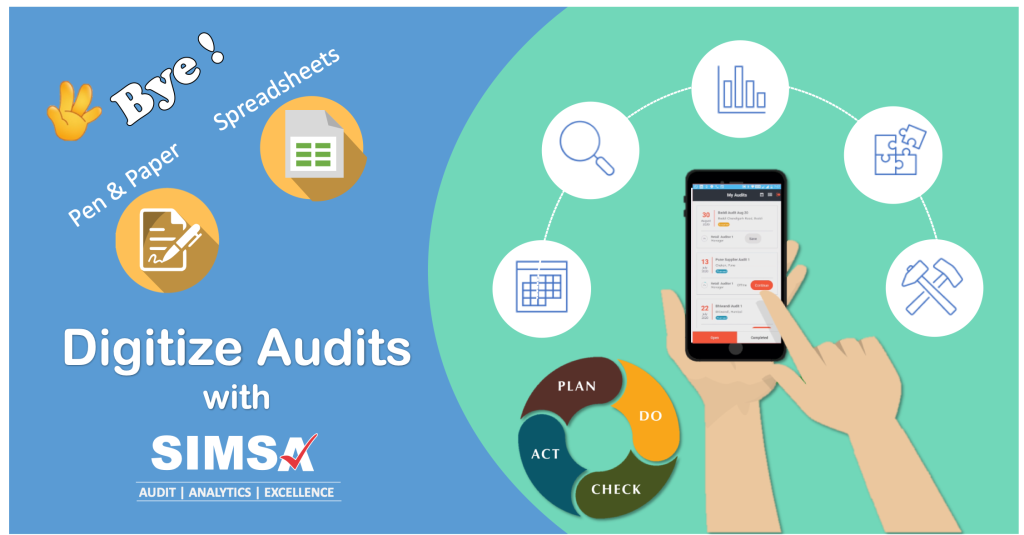Food Safety Audits: Ensuring Consumer Protection and Quality Standards
Understanding Food Safety Audits
Indulging in the culinary delights that nourish our bodies and ignite our taste buds is an inherent part of our human existence. However, as our reliance on processed food continues to soar, the critical issue of food safety has taken center stage, captivating the attention of not only discerning consumers but also vigilant governments worldwide.
Amidst a plethora of regulations and standards, it’s disheartening to witness occasional breaches that shake our trust— ranging from tainted beef to adulterated baby milk powder and even the dreaded presence of lead in our beloved noodles. The consequences are dire, with a staggering estimate of nearly one in ten individuals falling prey to foodborne illnesses, leading to an alarming half a million lives lost annually due to consuming contaminated food. Therefore food safety audits are immensely important for any food business.
Food safety audits serve as an essential tool for evaluating and monitoring adherence to food safety regulations, protocols, and industry best practices. When it comes to ensuring the highest standards of food safety, a comprehensive food safety audit acts as a powerful magnifying glass, meticulously examining every facet of your establishment’s operations involving food handling, production, storage, and overall hygiene practices employed by food establishments.
Conducting regular food safety audits is paramount for several reasons:
1. Consumer Protection: Food safety audits are instrumental in safeguarding public health by minimizing the risk of foodborne illnesses. By identifying potential hazards and implementing necessary preventive measures, audits contribute to maintaining the safety of consumers.
2. Compliance with Regulations: Food establishments are subject to various local, national, and international regulations. Regular audits ensure compliance with these regulations, mitigating legal risks and potential penalties.
3. Brand Reputation: Upholding high food safety standards enhances a business’s reputation and credibility. By prioritizing consumer safety, establishments can build trust and loyalty among their clientele, setting themselves apart from competitors.
Key Components of a Food Safety Audit
1. Food Safety Management System: It is the foundation of food safety. A documented management system documents the commitment to food safety, policy, processes, procedures, practices, and responsibilities and creates an environment of ensuring safety in every decision & activity. It also has protocols for regulatory compliance, and resolution in case of violations or non-conformities. The food safety audit checks whether all aspects of the management system are in place and implemented in spirit.
2. Food Production: Food safety in the manufacturing industry plays a crucial role in safeguarding consumers from potential health hazards. By adhering to strict guidelines and regulations, manufacturers can ensure that food products are free from adulteration, harmful ingredients, and undeclared substances. The aspects of food safety in manufacturing include a sterilized environment, comprehensive quality checks, effective cleaning and sanitation practices, and prevention of contamination.
The proper functioning and periodic calibration of manufacturing and testing equipment are critical for ensuring food safety. Malfunctioning or inaccurate equipment can compromise the quality and safety of food products. Good Manufacturing Practices (GMP) and Hazard Analysis and Critical Control Points (HACCP) principles are invaluable tools for promoting food safety in manufacturing.
3. Food Storage & Handling: Proper storage and handling of food are crucial steps in maintaining its freshness, quality, and safety. Refrigeration at the appropriate temperature slows down bacterial growth, preserving the freshness and quality of perishable foods. It is important to regularly monitor and maintain the temperature of storage units to prevent bacterial proliferation.
Proper segregation of raw and cooked foods is vital to prevent cross-contamination. Raw meats, poultry, and seafood should be stored separately from ready-to-eat foods to avoid the transfer of harmful bacteria. Regular inspection and rotation of stock are essential to prevent the consumption of expired or spoiled foods. This includes checking for signs of pest infestations and promptly discarding any damaged or compromised food items. Proper hygiene practices, which include thorough handwashing before and after handling food, and wearing appropriate protective gear, such as gloves and hairnets, to prevent physical and microbial contamination.
4. Food Packaging: Food safety audit should verify that the packaging materials used are safe for food contact and comply with regulatory requirements. Check if the materials are free from toxins, contaminants, or substances that could migrate into the food. Review the accuracy and completeness of the labeling on the packaging. Ensure that all mandatory information is present, such as product name, ingredients, allergen warnings, nutritional information, expiration date, batch or lot number, and proper storage instructions. Check if the packaging components, such as films, liners, or containers, are traceable to their source. This enables effective recall management and helps identify potential issues or risks associated with the packaging materials.
5. Hygiene and Pest Control: Evaluate the personal hygiene practices of food handlers. This includes checking if employees follow proper handwashing procedures, wear appropriate protective clothing (such as gloves and hairnets), and maintain overall cleanliness and hygiene while handling food. Inspect the effectiveness of pest control measures. Check for evidence of pests or signs of infestation, and ensure that appropriate preventive measures, such as regular inspections, pest monitoring, and pest control treatments, are in place. Verify that any pest control products used are approved and stored safely.
6. Structural Integrity: Assess the physical condition of the facility, including walls, ceilings, floors, and doors. Look for any structural deficiencies that may allow pests to enter or create harborage areas, such as cracks, gaps, or broken seals. The openings in walls allow birds inside the facilities to be exposed to the risk of contamination. Using air curtains or PVC curtains at the doors, docks, and maintaining cleanliness in the external areas are important components of food safety audits.
7. Training & Awareness: Training and awareness are critical components of a food safety audit, as they play a crucial role in ensuring that employees have the knowledge and understanding to uphold food safety standards. Evaluate the effectiveness of training programs provided to employees. Assess the coverage of topics such as personal hygiene, cross-contamination prevention, cleaning and sanitation procedures, allergen control, temperature control, and foodborne illness prevention. Verify that training materials are up-to-date, comprehensive, and tailored to the specific needs of each employee role.
Nearly one in ten individuals falling prey to foodborne illnesses, leading to an alarming half a million lives lost annually due to consuming contaminated food.
Implementing Effective Food Safety Audits
To ensure the success of food safety audits, establishments should follow these best practices:
1. Establish Clear Protocols and Standard Operating Procedures (SOPs)
Developing comprehensive SOPs that encompass all food safety aspects is crucial. SOPs should cover areas such as receiving and storage of raw materials, proper cooking and cooling techniques, and thorough cleaning and sanitation procedures.
2. Provide Regular Employee Training
Regularly educate and train employees on food safety practices to foster a culture of awareness and responsibility. Training should include proper hand hygiene, allergen management, and techniques to prevent cross-contamination.
3. Implement Robust Monitoring and Documentation Systems
Establish a system to monitor and document critical control points, such as temperature logs, cleaning schedules, and equipment maintenance. This documentation serves as evidence of compliance during food safety audits.
4. Conduct Internal Audits
Internal audits serve as valuable self-assessment tools. By conducting regular internal audits, establishments can identify areas that require improvement and take proactive measures to address any issues before external audits occur. Download a sample comprehensive Foods Safety Audit Checklist
5. Stay Abreast of Regulatory Changes
Food safety regulations are constantly evolving. It is essential for establishments to stay up to date with any changes in regulations and adjust their practices accordingly. Regularly reviewing and updating SOPs ensures compliance with the latest standards.
6. Engage with Professional Food Safety Consultants
Engaging the services of professional food safety consultants can provide valuable insights and expertise. These consultants can conduct thorough audits, identify potential risks, and offer recommendations for improvement based on industry best practices.
7. Embrace Technology
Leveraging technology can streamline food safety audits and enhance overall efficiency. Digital tools, such as temperature monitoring systems, automated checklists, and real-time reporting, can simplify the audit process and provide accurate data for analysis.
Benefits of Effective Food Safety Audits
Conducting food safety audits in a meticulous and consistent manner offers several benefits to food establishments:
- Risk Identification and Prevention: By identifying potential hazards and vulnerabilities through audits, establishments can implement proactive measures to minimize risks and prevent foodborne illnesses.
- Continuous Improvement: Regular audits provide valuable insights into an establishment’s food safety practices, allowing for continuous improvement and the implementation of corrective actions where necessary.
- Legal Compliance: Adhering to food safety regulations and protocols through audits ensures compliance, reducing the likelihood of legal issues and associated penalties.
- Enhanced Efficiency: Through audits, inefficiencies in food handling processes can be identified and rectified, leading to improved operational efficiency and cost-effectiveness.
- Consumer Confidence: Demonstrating a commitment to food safety through audits instills confidence in consumers, fostering loyalty and positive word-of-mouth promotion.
Conclusion
In conclusion, prioritizing food safety audits is crucial for maintaining consumer protection and upholding quality standards in the food service industry. By conducting regular and thorough audits, establishments can identify potential risks, implement preventive measures, and demonstrate a commitment to excellence. SIMSA, a PDCA-based audit software tool can not only help to standardize the food safety audits but also saves up to 70% time in managing audits and also ensure timely closure of the gaps.





